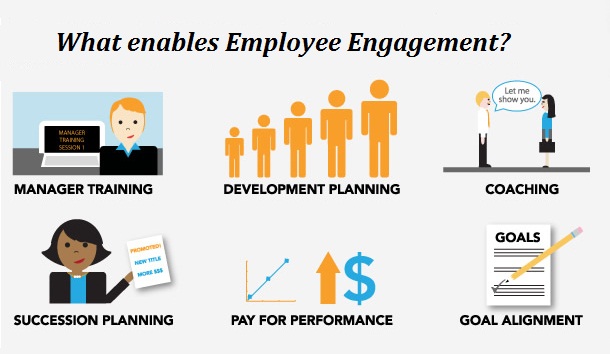Gallup researchers studied 49,928 work units with 1.4 million employees. The result confirms the expected connection between employee engagement and key performance outcomes.
Customer ratings, profitability and productivity are higher with engaged employees. Shrinkage, absenteeism and quality defects are higher with disengaged employees.
There cannot be a uniform strategy for all the employees. As the employees are different, our strategies also must be different.
Basically, there are three types of employees. Engaged employees are in the first category. They work passionately. They feel a profound connection to the company. They drive innovation and move the organization forward.
Not engaged employees are in the second category. They are essentially “checked out”. They are sleepwalking through their work day. They put their time into their work, not energy or passion.
Actively disengaged employees fall in the third category. They are not just unhappy with their work. They are also busy in acting out their unhappiness. These workers undermine everyday what their engaged coworkers accomplish.
Strategy 1: Recognize & Reward the Engaged Employees
Recognition and reward will be our strategy for the first category. With them, we are just telling these engaged employees to keep it up. It may be oral appreciation or a pat on the back. It may be an attractive greeting card or a special lunch. It may be parking lot concession or half day holiday. It may be permission to go home early or permission to work from home. It may be an increment or a gift to the family.
Strategy 2: Assist the Disengaged Employees
We must change the strategy for the second type of employees. Not engaged employees may have a reason for being so. That reason must be collected from them. They may not have a full understanding of their work. Then the task must be specially explained to them. They may not have the skills to perform the task. Then they must be given a special training. Some employees may have certain psychological problems. Then counseling sessions must be arranged for them.
Strategy 3: Provocate the Actively Disengaged Employees
We must follow yet another strategy for the third category. They are negative minded. If we add another negative to them, they will become positive. Provocation and challenge can be such a negative factor. If they feel that the company is very bad, tell them to make it very good. If something is not good, tell them to suggest a better thing. Give them the responsibility. Our innocent challenge exposes their hollowness. Half of them will realize their inadequacy and start learning things. Others will engage themselves due to sheer helplessness.
Recognition, assistance and challenge are the three strategies for engaging the three types of employees: engaged ones, not engaged ones and actively disengaged ones.




